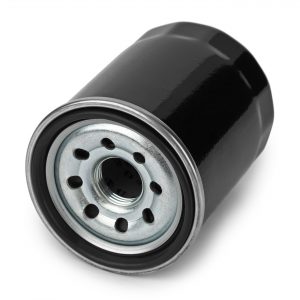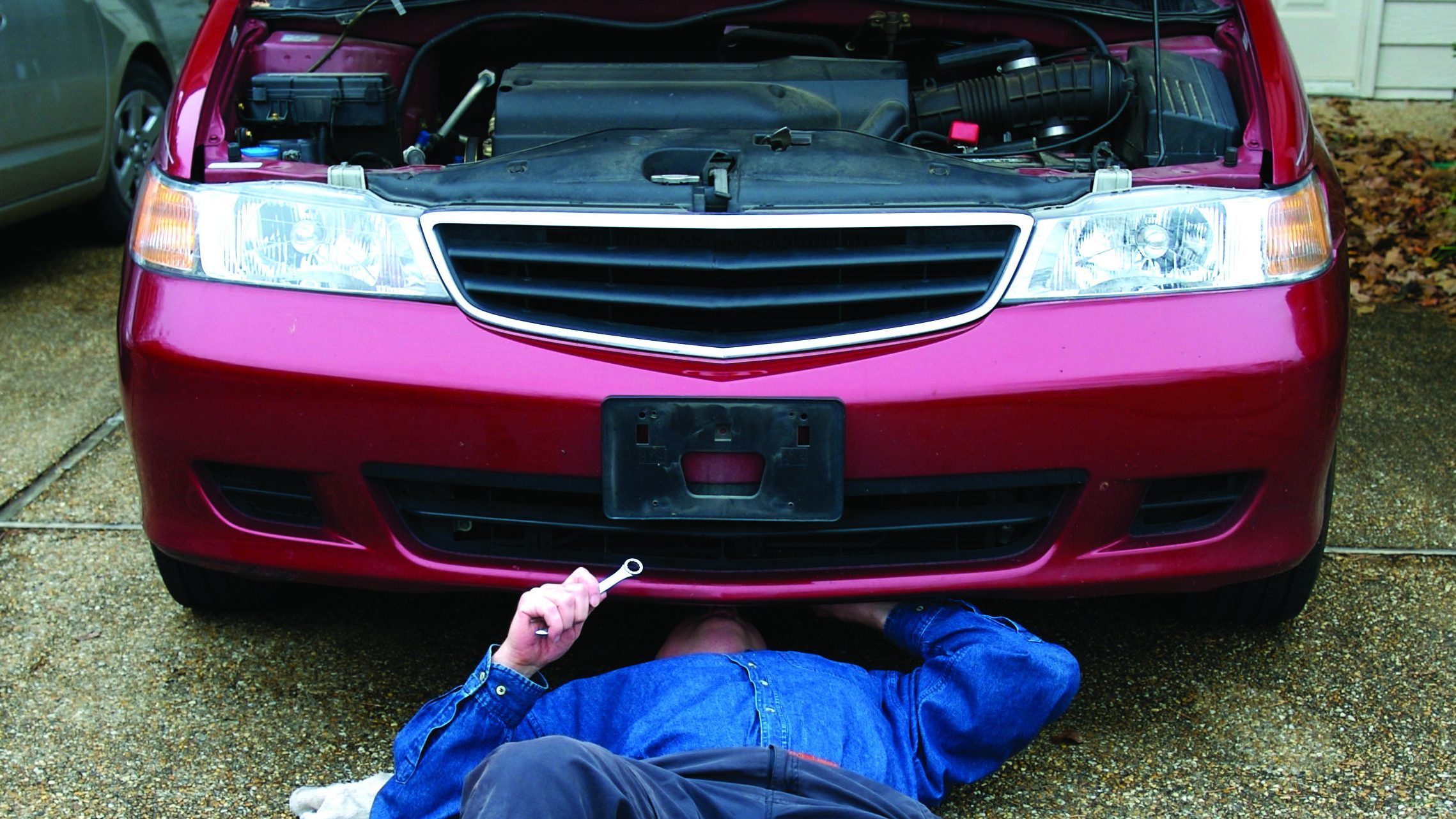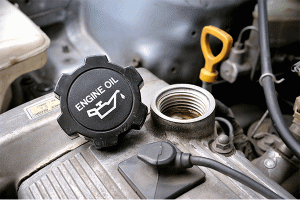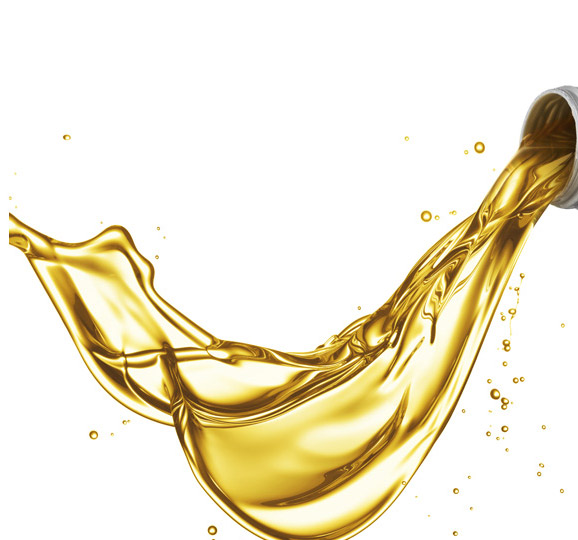As the pace of life has increased and engine technology has grown more complicated, most people now pay a professional to take care of vehicle maintenance. But a devoted segment of the population still loves crawling under their vehicles and changing their own oil.
We DIYers may have changed oil hundreds of times, but it doesn’t hurt to get reminders of mistakes you can make when performing an oil change.
Here are a handful of gaffes to avoid next time you change your own oil.
1) Install the wrong oil
By “wrong oil” I mean the wrong viscosity. Engines vary, as do their motor-oil requirements. If your Ford F-150 calls for 5W-20 oil, then don’t use 10W-40.
Find the Right Viscosity Oil for Your Vehicle
Using diesel oil instead of gasoline oil, or vice versa, is another potential pitfall. However, you can use diesel oil in your gas engine if it meets the appropriate specifications, as we explain here.
A third way to mess up is to use something other than a premium synthetic oil. This is my opinion, but if you have a mechanically sound engine and you care about your vehicle, you ought to use synthetic motor oil.
Oil protects the engine from wear and premature breakdowns. It seems silly to me to buy expensive auto insurance and cheap oil. Car insurance is just a piece of paper you keep in a drawer. The piece of paper doesn’t really do anything. The oil is doing things that make a difference.
Enough said.
2) Forget to reinstall the oil-fill cap
I did this once. Duluth, Minn., where I live, is a beautiful city on a hillside overlooking Lake Superior, the largest freshwater lake in the world.
I had just changed my oil and driven up the hill to visit a friend. Unfortunately, I’d forgotten to reinstall the oil-fill cap.
When I got to my friend’s house, hot oil had splashed all over the engine compartment. It was a mess. Worse yet, the cap was missing, so I needed to not only deal with the mess, I had to get a cap and more oil.
Well, the story goes downhill from there.
Because my friend lived at the top of the East Hillside, I decided to coast down the hill eight blocks and drive the two blocks to an auto parts store.
My wife was behind me driving our other car and I was watching her in the rear-view mirror as I drove instead of paying attention in front of me. When we arrived at the store, she was upset because I had run over and killed a squirrel. Fortunately it was only a squirrel and not someone’s dog, infant or grandmother.
Key points to remember: put the oil-fill cap back on and don’t drive forward while watching the rear-view mirror. (Would you believe it? On yet another occasion I was watching someone in the rear-view mirror to make sure they were still following me and I nicked a deer.)
3) Underfill or overfill the crankcase
Last year I got a call from a friend whose car was making a “funny” noise. He wondered if I could diagnose it. I drove to town and listened to the noise. It sounded like the engine was hollow, like there wasn’t any oil in it. He said he’d just changed the oil, but when we checked, it was three quarts low. Since the drain plug was on tightly and there was no evidence of leaking, we chalked it up to not paying attention to how many quarts he’d installed. Fortunately he only drove it one day like that.
Find out how much oil your vehicle takes and make sure you have enough on hand. Our handy Product Guide often provides that information.
After changing oil, run the car for a few minutes to circulate the oil, shut it down for a few minutes then check the oil level one final time.
Find AMSOIL Products for Your Vehicle
4) Strip the drain plug threads
As I was working on this blog post, someone asked if forgetting to reinstall the drain plug would be one of the mistakes I cited. Yes, that is a mistake folks have made, again mostly due to absent-mindedness.
Fortunately, if you are changing oil in your garage or driveway, you will notice very quickly by the trickling sound near your feet that you missed this step.
I think there’s a more serious mistake you can make involving the plug.
It’s more common than you think in the quick-lube world since employees in a hurry can become careless. At a quick-lube convention workshop once, a speaker reported that two to three percent of drain plugs at one chain of quick lubes were mis-threaded or stripped. The result is a slow leak and a not-so-easy fix. Be careful when reinstalling the drain plug.

5) Leave the O-ring behind
The time to change your oil filter is when you are changing the oil. There are three things to know about changing the oil filter.
- First, when you remove the filter, make sure the O-ring comes off with it. There will be a new O-ring on your filter that you’re supposed to use. You do not want to put the new filter on and have two O-rings there.
- Second, before you screw the new filter on, moisten the O-ring with a fingertip of oil. Don’t put the filter on dry. Lubing the O-ring helps the filter and engine mate better, and it helps you more easily remove the filter at your next oil change.
- Finally, don’t over-tighten. You only need to hand-tighten the filter. Make it snug, but don’t overdo it.
Performing a DIY oil change isn’t rocket science. In fact, it can offer a great deal of satisfaction at a job well done…provided you don’t make any of the mistakes I listed here.
Find AMSOIL Products for Your Vehicle







Fill the filter with new oil before installing?
Not necessary. In the old days with old V-8 engines and larger filters there would be a few seconds of no oil pressure and some clunking noise that some people feared was bad. IN the past 20 years or so the filters have become smaller, and the delay in building oil pressure is insignificant. The only oil you need is a film of lube for that o-ring gasket.
Thanks for stopping by.
ed
Great advice about changing your own oil ! I’ve been doing it for years,,,( my generation…I’m 69 ) Rewarding as well as a real bargain. I like the fact I know I can buy the best oil and not wonder what was poured in by someone claiming to have used a top shelf product ! The second reward is you, the owner, are not in a hurry and take the extra time to do it right . During the early busy days, I had my wife bring her car to one of the big name oil change places and found fresh oil in the driveway after her return. After this happened again, I lost faith in paying someone else to do the job ! I know that not everyone can change their own oil and filter, but what they can do is to check the driveway for oil leaks and look under the hood to see if the oil cap was reinstalled and check the oil to see if they put the right amount in the vehicle ! The last thought is people confuse, changing the oil, with checking the oil ! Engines use oil, so don’t wait till it’s time to change the oil,,,,check it once a week !…you will have peace of mind and maybe save losing your vehicle ! Good Luck !!
Great reminders, Ed. Have to confess I’ve been guilty of at least two of them!
Here’s a lesson that I learned. Invest in a quality drain pan. The first time i changed my own oil I used a cheap pan with no lid. It was a huge pain to move and i was an even bigger pain to dispose of the old oil.
I use high milage oil, synthetic oil I won’t us. My daughter had her oil changed by the dealer on a regular basis. When her jeep hit 100,000 miles the engine died. My car is older and has over 200,000 miles and is still going strong. I’ve been doing my own car work for over 35 years. So who is the expert?
Hi Raymond,
If you’re happy with your oil, by all means – keep using it.
I will say, however, that there could be several reasons your vehicle lasted longer than your daughter’s vehicle: operating conditions, quality of manufacture, engine design, maintenance practices, motor oil quality and so forth.
Thanks,
John
I was changing oil in my BMW 328i, removed the filter and drained the oil in pan after opening the underneath bolt. The mistake I made was to start pouring engine oil through the hole where oil filter goes, I poured two quarts and realized I need to pour thru oil cap. please not in BMW Oil filter is next to engine, its not underneath or sideways usually on other cars.
Car started correctly with no warning sign but next day “service engine soon” light came on and RPM is going up unexpectly. My question: did I mess up my car engine? How can this be fixed?
Hi Satyaveer,
I can’t imagine one could pour two entire quarts into the oil filter opening without most of it overflowing and spilling down the engine. But I’ve never changed oil on a BMW. I suggest calling your mechanic or the dealership for guidance.
Best of luck,
John
I have never heard of anyone doing this in my 63 years, but first time for everything!
But to answer your question, it doesn’t really matter how you got your oil into the engine, as long as you got it in!
I would recommend adding it in through the oil filler cap next time though!
One thing to also look out for – the drain plug gasket sticking on the oil pan itself when the plug is removed. I have had to pop it off with a worn flat blade screwer used like a scraper when the oil flow stops. I’ve had this happen on my Tacoma and a BMW motorcycle. I keep spare drain plug gaskets on hand ever since I switched to Japanese cars. Those manufacturers suggest replacing the drain plug gasket with every change, so I buy a bag when I start maintaining a new Honda, Subaru, or Toyota. Not sure if the US makes have the same suggestion now – my last US-make was a 2000 Mercury. I think it went over 300,000 with the factory gasket as did the 1993 Buick before it.
As a life-long auto tech, I made it a habit of changing the drain plug gasket if it’s crushed or deformed, or if it sticks to the oil pan, which clearly indicates its time to replace it due to afore-mentioned conditions.
great
Great reminders, Ed. Have to confess I’ve been guilty of at least two of them!
Changing oil is a little tough If you haven’t any prior knowledge. Hope Now is clear for everyone.